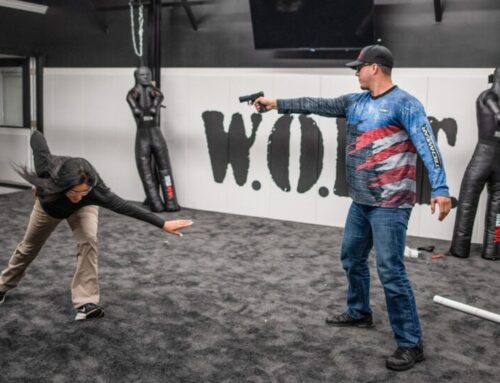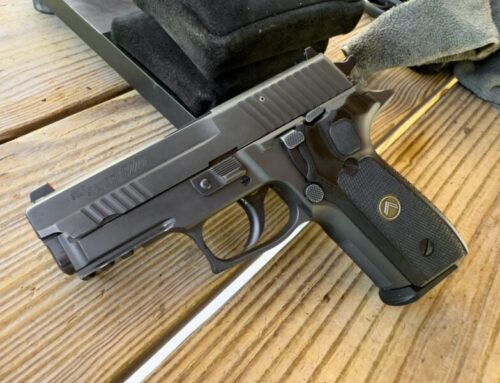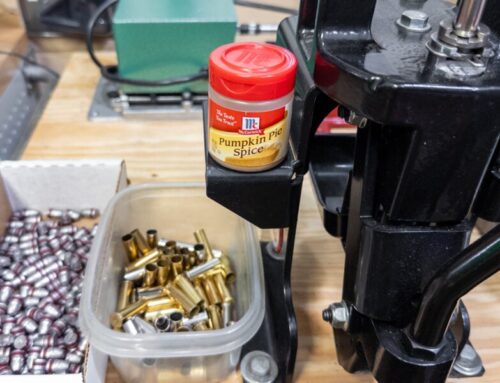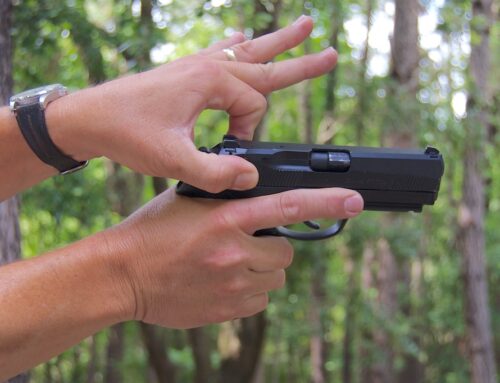
While the stuff stored in wooden casks on old pirate ships was considered a “low explosive,” modern gun powder is not the same as the black powder of old. As much as I’d love to have my reloading room filled with those wooden casks, the modern stuff comes in plastic bottles. Besides that, it’s much more efficient, not at blowing up, but launching bullets. While most people still refer to the stuff we use in reloading as “powder,” and I will here too, you’ll also hear it called smokeless powder or propellant.
Yes, it ignites. Yes, it makes a big noise when torched off inside of a loud rifle cartridge. But no, it doesn’t explode. What it does do is burn super fast. When this happens, it creates a large volume of gas hot gas. Since that expanding conflagration is contained within the confines of the cartridge and the barrel of the gun, pressure develops. A lot of pressure. In fact, the common .223 Remington cartridge creates pressures in the range of 55,000 pounds per square inch, although that only exists for a very short time. I keep my mountain bike tires at just 50 pounds per square inch, and that’s plenty to support my fat butt. I figure that if I could inflate my tires with the pressure generated by a single .223 round, it would be enough to keep over 1,000 of me off the pavement.
It’s this pressure, created by a rapidly expanding gas cloud that forces the bullet past the friction of the case neck holding it, into the rifling of the barrel, and out the fiery end of your gun – all in the blink of an eye. This efficient use of pressure is really where modern smokeless powder varies from black powder the most. For all the smoke and noise, black powder doesn’t generate a whole lot of gas volume (read pressure) per unit, although it smells kind of good.
When it comes to reloading, the powder is the biggest variable. Not only do you need to worry about the exact amount of powder in a charge, but you also need to consider the type of powder. By my rough count, and this is not at all official, there are somewhere around 150 types of powder on the market.
Types of powders
Modern propellants, at least the ones available to us reloaders, are either single base or double base. Single base powders are made from nitrocellulose only. Double base powders are a combination of nitrocellulose and nitroglycerine – you know, that stuff they used in old westerns to blow up safes and make dynamite. Strangely enough, these two pretty volatile things, nitrocellulose, and nitroglycerine are fairly stable when blended, sort of like Kim Kardashian and Kanye West.
While the active ingredients are chemicals with “nitro” as part of the name, there are other ingredients, like retardants, that help the manufacturer achieve specific burn rates. We’ll get into the issue of burn rates next.
Burning rates
Some powders are designed to burn faster than others. A “faster” powder does not imply faster velocity, nor does a slower powder imply a lower bullet velocity. Rather, they burn rate is tuned to the caliber, cartridge case design, intended use in a short or longer barrel gun, the volume of powder in a recipe, and type of primer.

With any powder, strict adherence to published recipes is critical.
At the risk of over simplifying a pretty intensive chemical process, you might think of it this way. A small pistol cartridge like the .32 ACP has low volume and operates out of a pistol with a short barrel. The powder charge has to ignite and burn quickly so the right amount of pressure can be developed before the bullet leaves the muzzle. However, in a larger cartridge like .30-06 fired from a rifle, you really want the pressure to build as the bullet moves down the barrel. If you used the fast burning powder appropriate to the .32 ACP, but in the larger quantity required for .30-06, the immediate pressure spike from a fast powder would blow up the gun. The slower burn rate allows the pressure to develop at a rate appropriate for the larger cartridge and barrel. You might also think of it like smashing a water balloon suddenly with your hands. If you smack them together, the balloon explodes. If you press them together slowly, the balloon empties gracefully.
Fortunately, you don’t need to worry too much about burn rates directly. Your reloading manual will have a powder burn rate chart that ranks the various powders by speed. And of course, the recipes for each load will only list the powders with appropriate burn rates.
Shapes
You’ll also hear about ball, flake and extruded powders. These terms refer to the actual shape of the powder granules. Notice I said “granule” and not “grain.” That’s because a “grain” is a weight unit of measure for powder charges. Each grain is 1/7,000th of a pound. I only clarify this to be sure that one doesn’t see a recipe for 5.7 grains and think of 5.7 granules. Hey, it’s a little confusing if you’re not used to this stuff.
Anyway, ball powders are spherical in shape, and flake powder is, well, flaky. You will see some flake powder shaped like round discs and others shaped like a flat diamond, but the idea is the same. Extruded powders look like tiny little sticks that are cut into equal lengths. One reason for the difference in shapes is to manage burn rates – the same powder shaped into different configurations will burn differently.

This is an extruded powder. Note how the granules are shaped like sticks.
For reloaders, the shape can also be a convenience or a headache. If you’re using a powder dispenser, extruded and flake powders may not meter quite as easily as ball powders. That’s because those little sticks and flakes get hung up in the measuring drum. When metering these, you might feel powder granules being cut as you operate your dispenser. It’s not a big deal, just know that dispensers may feel a bit stickier with those types of powders.
What about powders from different manufacturers with the same numbers?
Sometimes you’ll run across powders from different manufacturers that appear to be the same, at least based on the name. For example, you’ll see IMR 4350, Hodgdon 4350 and even Accurate Arms 4350. You’ll also see powders like Hodgdon 4895, IMR 4895, Hodgdon 4831 and IMR 4831. Sometimes these powders are interchangeable. Many times they are not. The safe bet is stick with only the exact powder and manufacturer specified. Unless you’re at the expert reloader level, and know exactly which powders are safely substitutable, don’t do it. There’s not enough upside to a shortcut like this to risk blowing up your hands and face.
Care and handling
Properly stored, powder can last a long time. Do keep your powder in a cool and dry environment. Higher temperatures and humidity aren’t friendly to powder performance over time. I also don’t like to keep my powder in an enclosed space like a safe or steel cabinet. In the event of a fire, you don’t the resulting pressure contained. Can you say “extra large bomb?”
When reloading, I’m exceptionally cautious about making sure the powder in the recipe matches the powder in my dispenser. I keep all powders on a separate shelf and only have the bottle of the one I am working with on my reloading bench at any given time. You really, really don’t want to load the wrong powder in the wrong cartridge. There’s a reason you see those pictures of blown up guns on the internet.
Hey, since we’re talking about powders, can you help me with something? Every time I read a spy novel, the author goes to great lengths to talk about “the smell of cordite.” While cordite was a type of powder, it hasn’t been used since before Senator John McCain was born. If we all work together, we can put a stop to this powder terminology abuse. Cool with you?








Leave A Comment